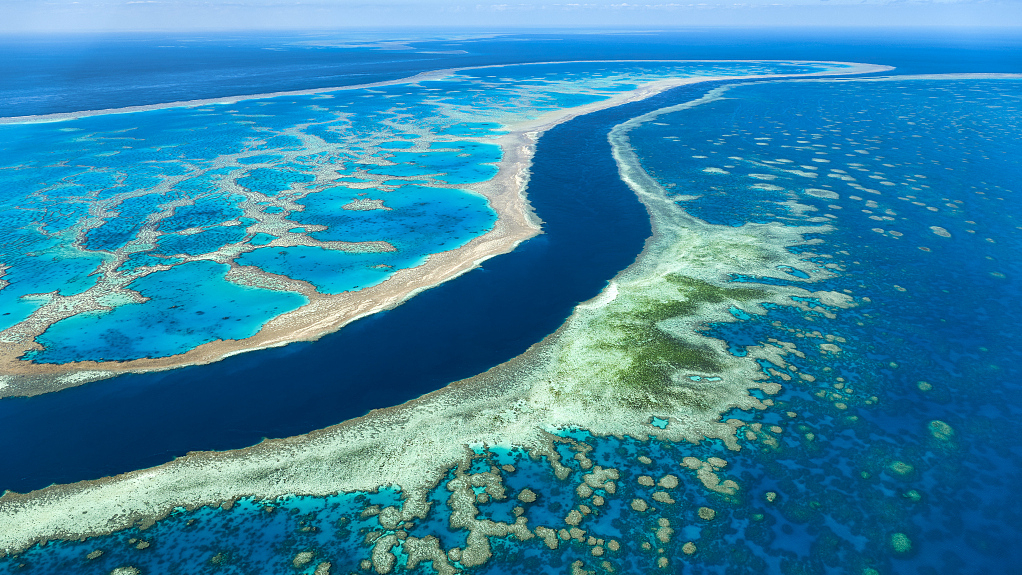Description

Disclaimer: Copyright infringement is not intended.
Context:
- Recent evidence from the Australian Marine Conservation Society indicates that coral bleaching in the southern part of the Great Barrier Reef is more severe than anticipated.
Details
The extent of Coral Bleaching:
- New footage reveals that coral bleaching has spread to deeper parts of the reef, with corals at 18 meters depth affected and showing signs of dying due to record marine heatwaves.
Record High Sea Surface Temperatures:
- Data from the Copernicus Climate Change Service shows that global sea surface temperatures in March reached a record high of 21.07 degrees Celsius, with February also seeing elevated temperatures.
- Scientists note that such prolonged marine heatwaves are unprecedented in the history of the Great Barrier Reef.
Impact and Comparison with Previous Events:
- The ongoing bleaching event is the fifth mass coral bleaching in eight years, with evidence suggesting it could be as severe as the devastating event in 2016.
- Aerial footage reveals that 75% of the Great Barrier Reef has been affected by bleaching, with much of it falling under high to extreme bleaching categories.
- Mass coral mortality has already been observed since February and is expected to continue in the coming months.
Causes and Implications of Coral Bleaching:
- Temperature Stress:
- Elevated sea temperatures, particularly during periods of prolonged heatwaves, can cause corals to become stressed.
- When water temperatures exceed certain thresholds, corals expel the symbiotic algae living within their tissues, leading to bleaching.
- Light Intensity:
- Excessive sunlight, especially when coupled with high water temperatures, can increase the stress on corals.
- Intense light can disrupt the photosynthetic processes of the algae living within coral tissues, contributing to bleaching.
- Nutrient Levels:
- Imbalances in nutrient levels, such as increased nitrogen or phosphorus from agricultural runoff or sewage discharge, can exacerbate coral stress.
- Elevated nutrient levels can promote the growth of algae, which can compete with corals for space and resources.
- Pollution:
- Pollution from various sources, including runoff from land-based activities, can introduce harmful substances into coral reef ecosystems.
- Chemical pollutants and sedimentation can directly harm corals and increase their susceptibility to bleaching.
- Ocean Acidification:
- Increased levels of carbon dioxide (CO2) in the atmosphere lead to higher CO2 concentrations in seawater, causing ocean acidification.
- Acidification can weaken coral skeletons, making them more vulnerable to stressors like temperature fluctuations.
- Extreme Weather Events:
- Hurricanes, cyclones, and storms can physically damage coral reefs and disrupt their delicate ecological balance.
- Damage from these events can weaken corals and make them more susceptible to bleaching during subsequent stress events.
- Global Climate Change:
- Overall, global climate change exacerbates the frequency and severity of coral bleaching events by increasing ocean temperatures and acidity.
- Rising sea levels and changing weather patterns also pose additional threats to coral reef ecosystems.
Strategies to mitigate and prevent coral bleaching on a global scale:
- Reduce Greenhouse Gas Emissions:
- Implement policies and initiatives to reduce greenhouse gas emissions, particularly carbon dioxide (CO2), to mitigate the impacts of climate change on ocean temperatures and acidity.
- Transition to Renewable Energy:
- Promote the adoption of renewable energy sources such as solar, wind, and hydroelectric power to reduce reliance on fossil fuels and decrease carbon emissions.
- Protect Coral Reef Ecosystems:
- Establish marine protected areas (MPAs) and implement effective management strategies to safeguard coral reef ecosystems from destructive activities such as overfishing, habitat destruction, and pollution.
- Sustainable Coastal Development:
- Encourage sustainable coastal development practices that minimize runoff of pollutants, sedimentation, and other contaminants into marine environments.
- Promote Coral Reef Resilience:
- Support research and conservation efforts aimed at enhancing the resilience of coral reefs to climate change stressors through initiatives such as coral reef restoration, selective breeding of resilient coral species, and the creation of marine sanctuaries.
- Improve Water Quality:
- Implement measures to improve water quality by reducing nutrient pollution and sediment runoff from agricultural, industrial, and urban sources.
- Collaborative International Efforts:
- Foster collaboration among governments, scientists, conservation organizations, and local communities to develop and implement effective conservation and management strategies for coral reef ecosystems on a global scale.
- Monitoring and Early Warning Systems:
- Establish monitoring programs and early warning systems to detect and respond to coral bleaching events promptly, allowing for targeted conservation interventions and adaptive management approaches.
- Research and Innovation:
- Invest in research and innovation to develop new technologies, tools, and strategies for mitigating coral bleaching and enhancing the resilience of coral reef ecosystems in the face of climate change and other stressors.
Source:
https://www.downtoearth.org.in/news/wildlife-biodiversity/ongoing-coral-bleaching-at-great-barrier-reef-may-be-as-bad-or-worse-than-2016-event-95534
|
PRACTICE QUESTION
Q. For the Assertion (A) and Reason (R) given below, choose the correct alternative from the following:
Assertion (A): Coral bleaching is a serious threat to marine biodiversity worldwide.
Reason (R): Coral bleaching occurs due to the expulsion of symbiotic algae from coral tissues under environmental stress.
A) Both A and R are true, and R is the correct explanation of A.
B) Both A and R are true, but R is not the correct explanation of A.
C) A is true, but R is false.
D) A is false, but R is true.
Correct answer: A)
|













